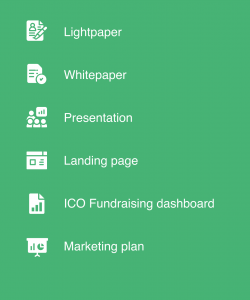Содержание
The Infrastructure as a Service means the hiring & utilizing of the Physical Infrastructure of IT from a third-party provider. The IT resources are hosted on external servers, and users can access them via an internet connection. Cost-Effectiveness – The overall cost of a hybrid solution decreases since it majorly uses the public cloud to store data. Security between tenants.If the security policies are aligned and if everyone follows the same standards then the community cloud model is very secure. A Private cloud is a cloud service model that is only used by one organization for internal use. In this article, we will explore the fundamentals of cloud – the cloud computing layers.
The cloud platform is implemented in a cloud-based secure environment that is protected by powerful firewalls and under the supervision of an organization’s IT department. There are multiple types of deployment models for cloud computing that need to be discussed which will cover all common cloud computing service providers scenarios. And allows companies to be more flexible and use more services. In general, a hybrid cloud occurs when a business operating on a private cloud expands and starts using a public cloud, generating in this way a combined environment.
Two-Factor Authentication is far more secure when combined with security best practices such as complex passwords and mandatory password changes. This website is using a security service to protect itself from online attacks. There are several actions that could trigger this block including submitting a certain word or phrase, a SQL command or malformed data. Hybrid cloud – combines previously mentioned models in any way suited to business needs. To understand the meaning of cloud deployment, we have to take a step back and talk about Cloud Computing.
Nevertheless, using a combination of both public and private models requires strong IT management and, accordingly, higher investments. It means the cloud provider hosts hardware, software, networks, servers, applications and many other infrastructure resources. The cloud deployment model identifies the specific type of cloud environment based on ownership, scale, and access, as well as the cloud’s nature and purpose. The location of the servers you’re utilizing and who controls them are defined by a cloud deployment model.
With cloud deployment, you are ensuring all the installation and configuration, the setups, are finished before someone can use the end product. Public cloud deployments are housed on public servers that are available over the internet or through a VPN service. All of the hardware such as VM hosts and network equipment belongs to the service owner. The service owner usually maintains and administers all of the available resources. This makes it far less onerous to operate IT infrastructure for companies that do not want to invest heavily in hardware and software.
Virtual Private Cloud
A company might choose to have their cloud infrastructure on premise or hosted at a data center. The systems that run on a private cloud are designed and maintained by the company’s own staff. This means that the company that runs a private cloud must have technical staff on hand to assist with any issues that come up during the operation of the private cloud.
- Choosing the right one from the various types of cloud service deployment models is essential.
- Agile development makes it possible to release after each sprint, typically in 2-4 weeks cycles.
- There are a number of different methodologies and ways to define the elements of the Cloud.
- The location of the servers you’re utilizing and who controls them are defined by a cloud deployment model.
- There are lots of discussions on how strict the definition of Private Clouds should be.
- Examples are operating systems, databases, or development frameworks.
Uniformity of best practiceswill help to increase the overall security and efficiency of these setups, so they rely quite heavily on effective cooperation between tenants. Public cloud – owned and operated by third-party cloud providers available to anyone who wants to use them. Platform as a Service allows outsourcing of hardware infrastructure and software environment, including databases, integration layers, runtimes, and more.
Although there are differences between public and private cloud platforms in terms of access, underneath the hood there isn’t all that much to differentiate the two. The technological underpinnings are very similar, but the ownership is where the difference lies. Another advantage of this deployment is that there is no need to hire additional staff to maintain and service components as this is all done by the service owner. The process of provisioning services is also streamlined on popular public cloud platforms that need to be able to spin up new services and capacity quickly. The other advantage is that you can also tap off on your overheads when demand is lower, which can save your organization money. Private cloud – cloud providers also provide private solutions for those that want to have an additional layer of security or customized option specific to their needs.
Ultimate Cloud Cert Guide
In general, a customer’s internally hosted data centre is regarded as a Private Cloud. If we add virtualization and automation, such a setup may very well be regarded as a Private Cloud. Today, organizations have many exciting opportunities to reimagine, repurpose and reinvent their businesses with the cloud. The last decade has seen even more businesses rely on it for quicker time to market, better efficiency, and scalability. It helps them achieve lo ng-term digital goals as part of their digital strategy. Less people will have access to the administration and configuration of the back end infrastructure that powers your private cloud, which gives you more control.
It’s quite rare that two distinct clouds would have an incident at the same moment. As a result, multi-cloud deployment improves the high availability of your services even more. The private cloud deployment model is the exact opposite of the public cloud deployment model. The distinction between private and public cloud is in how you handle all of the hardware. It is also called the “internal cloud” & it refers to the ability to access systems and services within a given border or organization.

The Public Cloud is always hosted by a professional Cloud supplier. Learning curve.To take advantage of being able to customize your private cloud, you need the right technical skills. Developers, cyber security experts, and DevOps professionals are all roles that you need to fill in order to effectively develop a solution on your private cloud. types of cloud deployment models Reliable, secure, highly-available (99,99%) and redundant cloud infrastructure. “Software as a service will remain the largest market segment, which is forecast to grow to $116 billion next year due to the scalability of subscription-based software. Discover a couple of Jamstack hosting and cloud deployment platforms favored by the community.
Platform as a Service is a type of cloud computing service which describes a model in which cloud service provider delivers hardware and software tools to consumers. In simple words Platform as a Service gives the consumer an environment from the operating system upwards. So, the consumer is not responsible for the underlying IaaS infrastructure. Examples are operating systems, databases, or development frameworks. Though the answer to which cloud model is an ideal fit for a business depends on your organization’s computing and business needs.
It also means you can move faster with projects and tests without planning and worrying about support infrastructure. It means cutting upfront costs that come with those projects and tests. It is ideal for companies wanting to maintain control over their business applications.
Hybrid clouds are not inherently more expensive than any of the other types that we have looked at. But there is certainly a risk of spending too much if you are not careful https://globalcloudteam.com/ about selecting the right services. The main benefits are the shared costs and the increase in opportunities to collaborate in real-time across the same infrastructure.
Top 3 Cloud Deployment Models: Public Cloud Vs Private Cloud Vs Hybrid Cloud
However, they wish to get rid of constraints to manage the hardware infrastructure and software environment. Simple Environments.Most organizations have specific requirements for tailor-made services. Many cloud platforms offer only simple functionality with little to no customization opportunities. You can mix and match the best features of each cloud provider’s services to suit the demands of your apps, workloads, and business by choosing different cloud providers. Under this model, the company itself is responsible for and bears the costs of the acquisition, deployment and maintenance of the cloud resources. Therefore, there are different understandings of deployment models with no one being better than another, but we are seeing some dominant definitions.
By sharing the infrastructure between multiple companies, community cloud installations are able to save their members money. Data is still segmented and kept private, except in areas where shared access is agreed upon and configured. The public cloud deployment model is the most widely understood of the four models. As the name suggests, a hybrid cloud is a combination of two or more cloud architectures.
There’s just one difference – it allows access to only a specific set of users who share common objectives and use cases. This type of deployment model of cloud computing is managed and hosted internally or by a third-party vendor. By bridging the public and private worlds with a layer of proprietary software, hybrid cloud computing gives the best of both worlds. With a hybrid solution, you may host the app in a safe environment while taking advantage of the public cloud’s cost savings. Organizations can move data and applications between different clouds using a combination of two or more cloud deployment methods, depending on their needs. Most cloud hubs have tens of thousands of servers and storage devices to enable fast loading.

Your cloud infrastructure and placement of each workload depends on your business needs. As such, a strong understanding of each deployment model is needed. It combines a private cloud with one or more public cloud services. It is defined as a Private Cloud environment at the consumer’s premises as well as Public Cloud infrastructure that the consumer uses. Cost.All but the largest companies in the world can afford to set up their own private cloud infrastructure. The hardware costs alone are prohibitively expensive for most companies.
How Much Do It Certifications Cost?
In cloud computing, we have access to a shared pool of computer resources in the cloud. You simply need to request additional resources when you require them. Getting resources up and running quickly is a breeze thanks to the clouds. It is possible to release resources that are no longer necessary. To successfully deploy your own cloud infrastructure, you need to be aware of the typesthat are available, and the pros and cons that we have outlined in our article.
Cloud Computing Service Models
It specifies how your cloud infrastructure will look, what you can change, and whether you will be given services or will have to create everything yourself. Relationships between the infrastructure and your users are also defined by cloud deployment types. Cloud deployment is defined in terms of service models and deployment models standardized by the National Institute of Standards and Technology.
Our Services
Choosing the right one from the various types of cloud service deployment models is essential. It would ensure your business is equipped with the performance, scalability, privacy, security, compliance & cost-effectiveness it requires. It is important to learn and explore what different deployment types can offer – around what particular problems it can solve. The cloud can be effectively deployed in many ways by businesses of any size and industry. There are 3 main cloud deployment models that organisations can leverage based on their needs, namely public, private and hybrid cloud. The community cloud operates in a way that is similar to the public cloud.
Benefits Of Public Cloud Deployments
Generally speaking, deployment is the process of making software available and ready for use. Improved security over its data, applications and resources, as private cloud operates on a physically isolated and dedicated architecture. A way to preserve the benefits of economy of scales with the Private Cloud is a Community Cloud. This is a cooperation between users who share some concerns like security, application types, legislative issues, and efficiency demands. In other words, a Community Cloud is a closed Private Cloud for a group of users. Higher Cost – With the benefits you get, the investment will also be larger than the public cloud.
This is because all of the users that access the community cloud will share the costs to create an equitable experience. Privacy and data segmentation is a very real concern for many organizations. Private cloud is a type of cloud computing that delivers services to a single organisation through a specific, dedicated architecture. As we know that the future of computing is in the cloud, private and government companies are adopting cloud computing services in their organization. As per Gartner’s report, the cloud computing market will be evolving in 2022 $354.6 Billion Dollars. Using cloud services means you don’t have to buy and maintain your own infrastructure.
Cloud Service Providers
We hope you now have a better picture of what cloud computing is and some of the different deployment models. There are many different considerations that need to be taken if you are to build the right solution for your own needs. Anyone who is looking to design a cloud solution that meets their requirements is spoiled for choice. The number of providers and vendors that offer cloud-hosting services and products is growing steadily. There are many different models to choose from in regard to cloud deployments.
Here, you will pay for software, hardware, and resources for staff and training. It works as your virtual computing environment with a choice of deployment model depending on how much data you want to store and who has access to the Infrastructure. If you are using a combination of public and private services, you have to make sure that all of your data has been properly separated. This can increase the security, compliance and auditing requirements of your business. Cost.If you are using a hybrid cloud, you can fall into the trap of spending too much.


Recent Comments